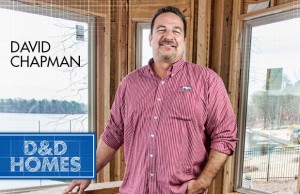Health Update: Coping With Chronic Illness Pt. 2

What We Can Learn From Epics
We are all familiar with survivor stories – accounts of people who have overcome incredible obstacles and hardship in order to still be alive to tell the story. If you are like me, you probably have some favorites. I love climbing mountains, so most of my favorite survivor stories are about mountaineering tragedies and within the climbing community these stories are referred to as “epics”.
Regardless of the threat you are faced with (whether it be an avalanche that has closed off your exit from a canyon, or a virus that has attacked your heart muscle and weakened it) the path you must take to survive that threat and tell the story has similarities. Therefore, studying survivor stories can speak to and offer insight for those coping with chronic illness.
My favorite survivor story is that of accomplished mountain climber Joe Simpson. For anyone who is not familiar with Joe’s story, I encourage you to watch the documentary film, Touching the Void. After reaching the top of a previously unclimbed route in Peru in bad weather, Joe fell while climbing back down, sustaining a crippling fracture of his knee and femur. As if this weren’t enough, a series of events compounded the disaster and he took another fall from more than 200 feet into the bottom of gapping ice crack on the glacier below the mountain. With inspirational motivation and will to live, Joe crawled out of that crack and off the glacier back to camp.
At this point I’m sure you are asking yourself, “what does any of this have to do with recovering from an illness?” When you suddenly have a massive heart attack and wake up with a tube down your throat connected to a machine that is breathing for you, you are in the bottom of that crack in the glacier.
You are cut off from the world and you are in a foreign land and even the simple functions that you take for granted on a daily basis, like brushing your hair, suddenly become a serious challenge. How do you get out of that ICU bed and make it to your son’s high school graduation next month when today, you are too weak to even brush your hair? The answer is one step at a time.
The “how to” is what we can learn from survivor stories like Joe Simpson’s. His overall goal was to get off that glacier and back to camp where he had friends that could help him. Your overall goal is to be healed again and be able to do the normal things that you used to. But you have to be careful. If you focus too much on the overall goal, it is very easy to be overwhelmed by the enormity of the task. Instead, you have to take that overall or ultimate goal and break it down into a series of smaller goals that aren’t so overwhelming.
When Joe told the story of how he crawled off that glacier, it struck me that he never talked about actually getting off the glacier. His focus was getting to that rock that was 10-20 yards further along his path. He basically took this 3 mile hike and broke it down in to a series of 20 yard segments and he only concentrated on the segment that he was currently on. There is a cliché that describes this kind of thought process. It’s called living in the moment, and it allows your mind not to become overwhelmed by the enormity of the task at hand.
Some days you may not even be able to accomplish the small steps. That’s okay too. Just be determined to try again tomorrow. Maybe you cannot physically stand up today – then get a pen and write a letter to someone you love. You have to begin each day saying to yourself, “I’m going to succeed at something today!” By being undeterred, refusing to accept failure, and celebrating small victories, you can take back some of the control that the disease has taken from you. You can control this moment.









0 comments